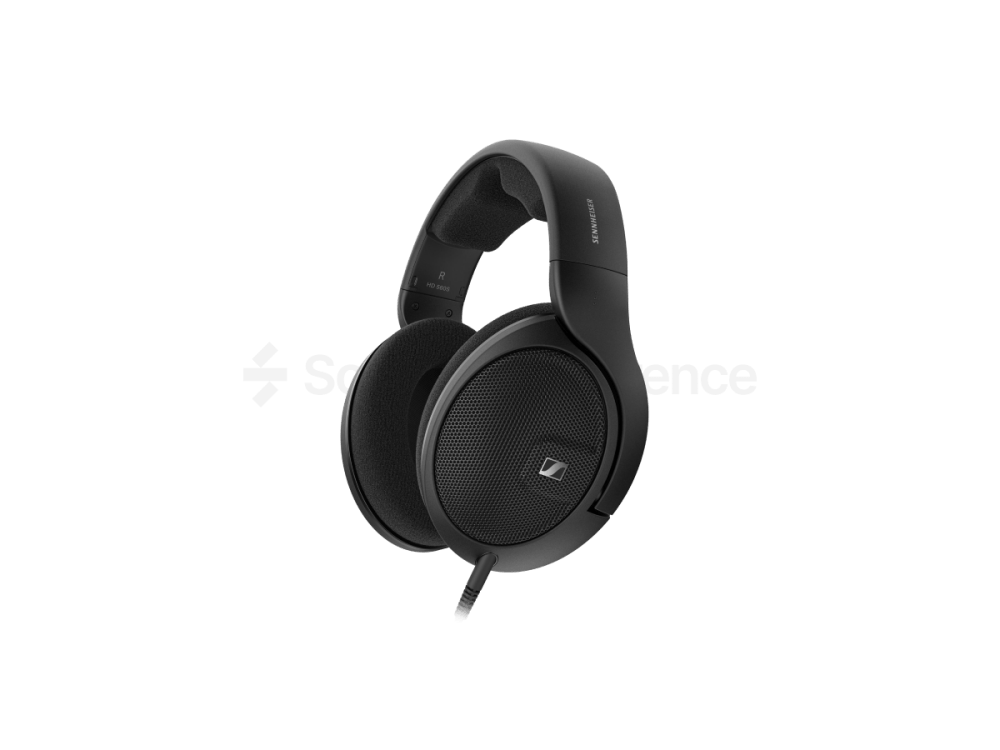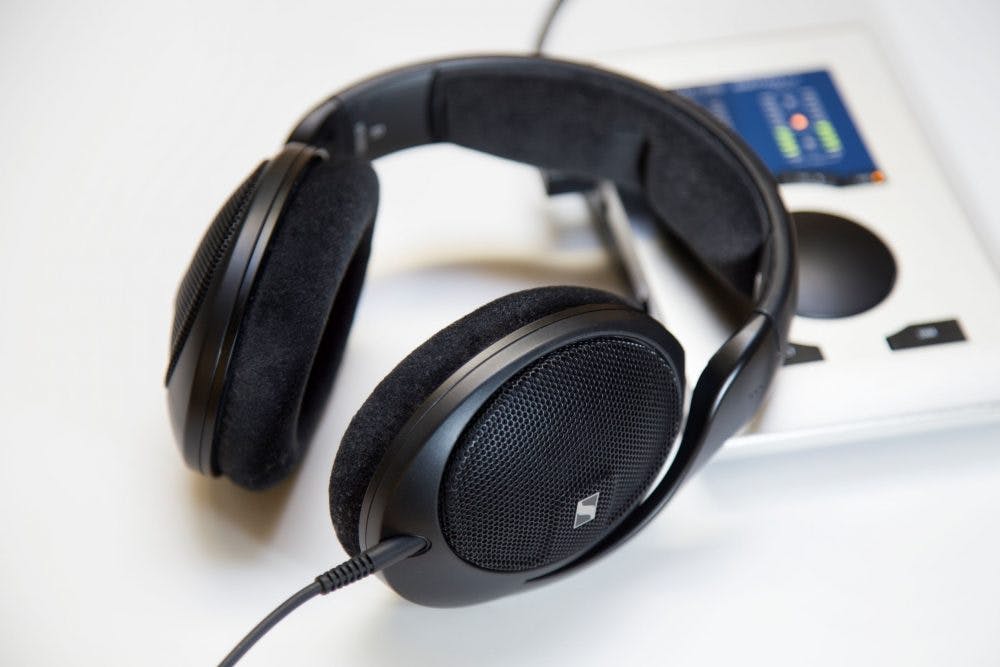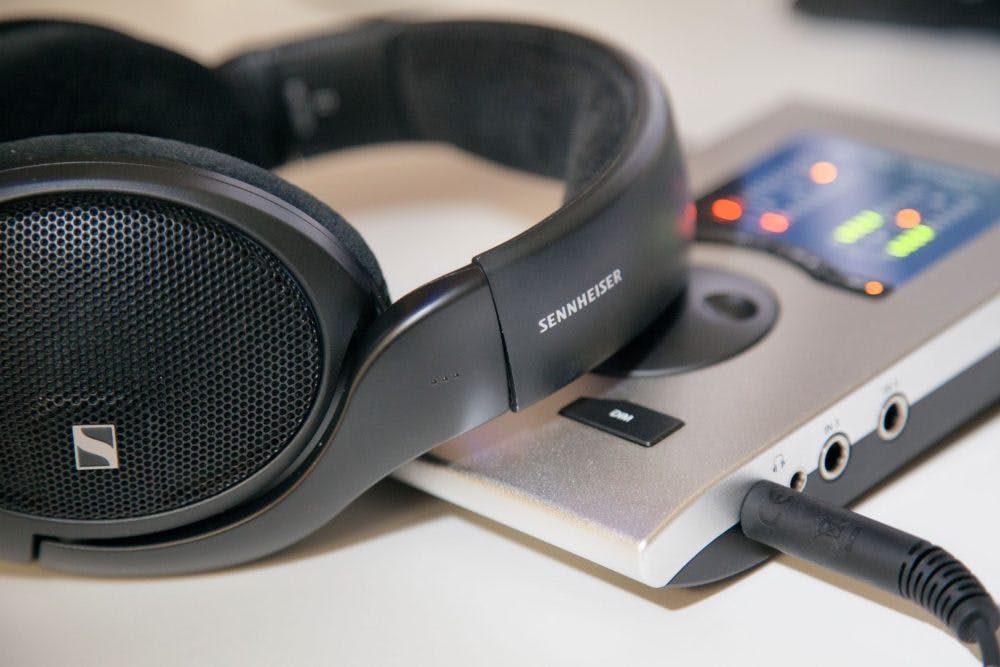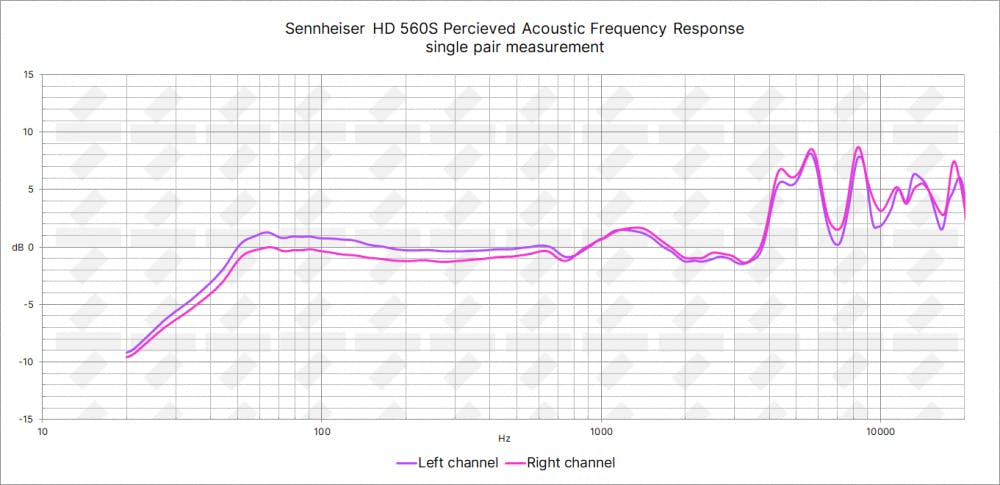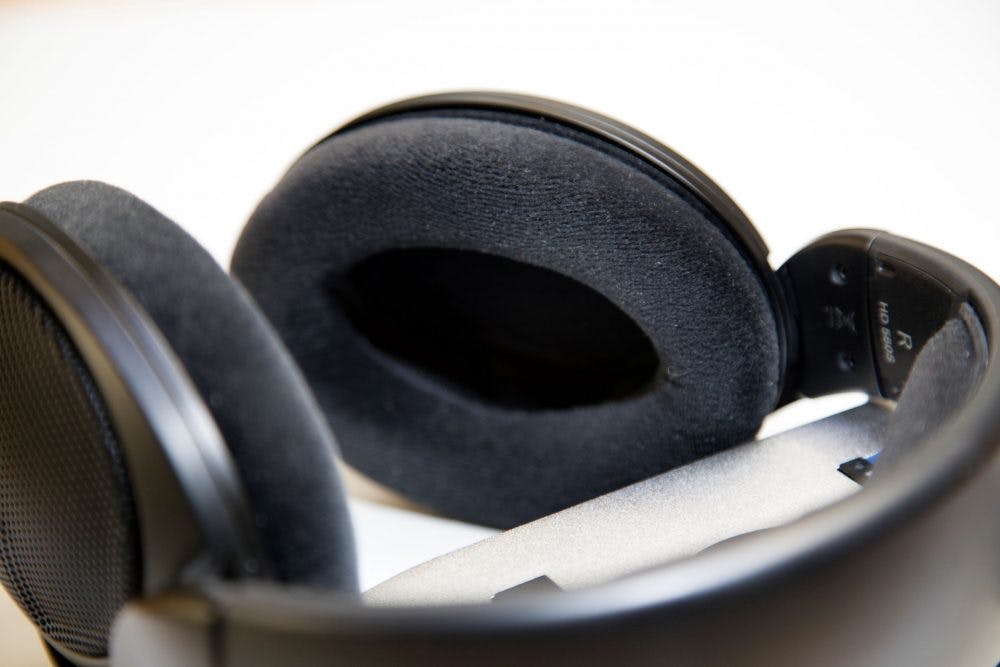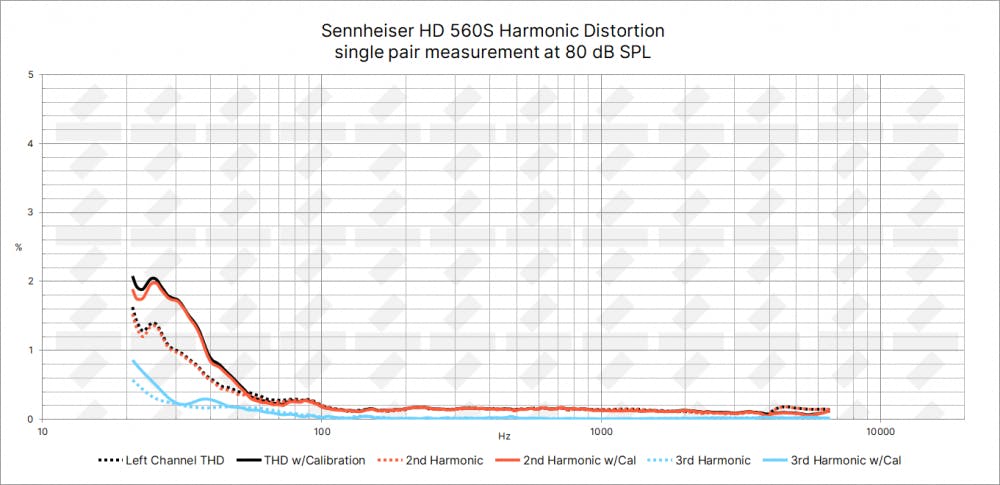Sennheiser recycles its entry-level audiophile headphone design once again with the new HD 560S. While they look almost the same as their predecessors from the outside, a new driver has been fitted in them, perhaps making HD 560S the best Sennheisers at this price point yet.
Yes, they’re targeted at the audiophile crowd but when paired with SoundID calibration there’s no reason not to consider them as mixing or production headphones. Perhaps these can be a slightly more affordable alternative to Sennheiser’s own HD 600?
- Great manufacturing consistency
- Very good THD performance
Pros list with SoundID Reference calibration
- Increased sub bass extension
- Neutral frequency response
- The build feels inappropriate considering the price
The 6.3mm connector that’s terminating the cable should give a strong hint that these headphones are not intended for use with mobile devices. But even if you choose to do so and utilize the included 6.3mm to 3.5 mm adapter cable to connect to, say, a laptop, the volume output will be quite limited, especially when used with SoundID calibration. If you’re looking for open back headphones suited for mobile work, this is not your best option.
It’s hard to keep track on how many HD 500 series models this headband and ear cup design Sennheiser has used previously and while it’s nothing spectacular, there really is nothing wrong with it either.
The build is all plastic, apart from the metal grilles, and while it’s put together well, it does feel cheap for $200 headphones. Ear pads and headband on the other hand are quite nice and are covered in soft velour, but it’s not enough to offset the overall low-budget impression.
Ear pads can be mistaken for the same units used on HD 600 and HD 650 but actually are different parts that are shared with HD 559.
Let’s start from the bottom of the spectrum. Low end extension isn’t great, it’s about the same as HD 650 and all the related open back models. Moving higher up the spectrum the similarities continue up to about 3kHz and this time it’s a good thing – the mids are nearly flat. From 4kHz upwards though, HD 560S sees a bright sounding increase that introduces quite a substantial coloring. Sometimes a smooth shape boost in highs can still sound relatively natural, but this isn’t the case as the boost starts abruptly and the dip at about 7kHz certainly doesn’t help.
The lack of sub bass paired with high frequency boost leads to a rather bright sound. Of course, this can easily be remedied with calibration by SoundID Reference.
The balance is very good but not flawless. The inconsistencies for the pairs that we measured spanned wide in frequency ranges, yet were very low in magnitude, about +/- 1dB throughout most of the spectrum. This difference is small enough to go unnoticed.
Overall our testers got along with the HD 560S well and there were very few complaints. One of them being the ventilation being subpar, leading to hot ears sooner than other open-back rivals. Also, the headband was reported to be on the tighter side and starting to get uncomfortable after about 2 hours, but that’s not a bad result and it’s likely that with time it’ll get looser and more comfy.
The oval-shaped ear pads are roomy and should exert very little pressure on the back of the pinnas if you have a larger set. This did not hurt long session comfort for our testers.
At €216/$200 HD 560S are a bit lonely as most of the competition is either more affordable or more expensive. While the plastic build isn’t impressive, the drivers are high quality. The main reason hurting value score is the fact that for European buyers AKG K612 Pro offers the same, apart from weaker bass extension (that’s fixed by Reference anyway) at half the cost. And if you’re in the USA, then Massdrop HD 58X or 6XX are better deals.
In their marketing materials, Sennheiser boasts about their distortion-free bass that remains clean even at high volumes. Our measurements corroborate that claim, at least to some extent. At 80dB SPL, which can be considered a moderately high volume, the harmonic distortion is low for open-back dynamic driver headphones and will lead to no audible artefacts, also when calibration is applied. But to be honest we would expect nothing less from recently released headphones.
When the SPL is increased to 90dB SPL, distortion rises rapidly on the graph, but it’s a very high volume and can’t be recommended for extended periods to anyone. Also, we don’t torture our engineers with listening tests at such a high volume.
How accurate and consistent is the correction effect among different listeners?HD 560S adaptiveness is great! They deliver consistent frequency response to most listeners, with meaningful differences only in the very top end of the spectrum.
Usually, open back headphones are quite good in adaptiveness, and HD 560S are no different
How much do they differ pair to pair in terms of frequency response?Sennheiser is pretty dependable when it comes to manufacturing consistency, at least with their more premium models. HD 560S is no exception as the differences among pairs are pretty negligible. Such little deviation between pairs means that the model average profile should be very accurate in most cases.
Rating
Conclusion
HD 560S are the best headphones yet in Sennheiser’s HD 500 series. Pair them with SoundID Reference and you have capable headphones for mixing and production, despite Sennheiser selling them as audiophile headphones. Regardless of the lackluster build for this day and age, the manufacturing consistency seems to be held to a very high standard. That in tandem with the good adaptiveness means that the model average calibration profile bundled with SoundID Reference will provide very accurate sound. If you want HD 600 or HD 650 but can’t justify the expense, HD 560S are worth having a look at!
For more information about Sennheiser headphones, please read our other reviews – HD 560S, HD 200 Pro, HD 280 Pro, HD 300 Pro, and HD 600 S.
You can order individually calibrated Sennheiser HD 650 headphones from our store here.
Continue to discover our top recommended PRO studio headphones in our Top 30 list.
Final Rating
Calibration Enabled
Calibration
